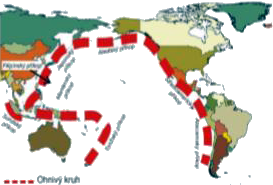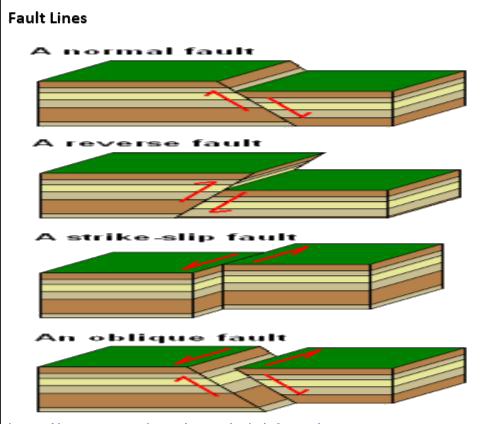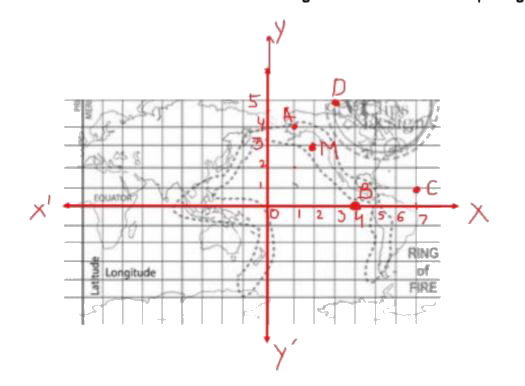Which theory explains the location of earthquakes, volcanic eruptions and newly forming mountains?
Theory of plate tectonic
Theory of evolution
None of these
Both (a) and (b)
The correct Answer is:A
To solve the question regarding which theory explains the location of earthquakes, volcanic eruptions, and newly forming mountains, we can follow these steps:
Step 1: Understand the Concepts
First, we need to understand what earthquakes, volcanic eruptions, and mountain formation are. Earthquakes are sudden shaking of the ground caused by the movement of tectonic plates. Volcanic eruptions occur when there is an escape of magma from beneath the Earth's crust. Mountains can form as a result of tectonic forces pushing the Earth’s crust upwards.
Step 2: Identify Relevant Theories
Next, we look at the theories that explain these phenomena. The two theories mentioned in the question are:
- Plate Tectonic Theory: This theory states that the Earth's outer shell (the lithosphere) is divided into several plates that glide over the mantle. The interactions at the boundaries of these plates can lead to earthquakes, volcanic activity, and mountain building.
- Theory of Revolution: This theory is not typically associated with geological phenomena like earthquakes or volcanic activity.
Step 3: Analyze the Role of Plate Tectonics
The Plate Tectonic Theory is crucial for understanding the locations of earthquakes and volcanic eruptions. Earthquakes predominantly occur at plate boundaries, where plates may collide, pull apart, or slide against each other. Similarly, volcanic eruptions often happen at these boundaries, especially at divergent and convergent boundaries. Mountains can also form at these boundaries due to the collision of tectonic plates.
Step 4: Conclusion
Based on the analysis, the Plate Tectonic Theory is the one that explains the locations of earthquakes, volcanic eruptions, and newly forming mountains. Therefore, the correct answer to the question is:
Answer: Plate Tectonic Theory (Option 1)
---
First, we need to understand what earthquakes, volcanic eruptions, and mountain formation are. Earthquakes are sudden shaking of the ground caused by the movement of tectonic plates. Volcanic eruptions occur when there is an escape of magma from beneath the Earth's crust. Mountains can form as a result of tectonic forces pushing the Earth’s crust upwards.
Next, we look at the theories that explain these phenomena. The two theories mentioned in the question are:
- Plate Tectonic Theory: This theory states that the Earth's outer shell (the lithosphere) is divided into several plates that glide over the mantle. The interactions at the boundaries of these plates can lead to earthquakes, volcanic activity, and mountain building.
- Theory of Revolution: This theory is not typically associated with geological phenomena like earthquakes or volcanic activity.
The Plate Tectonic Theory is crucial for understanding the locations of earthquakes and volcanic eruptions. Earthquakes predominantly occur at plate boundaries, where plates may collide, pull apart, or slide against each other. Similarly, volcanic eruptions often happen at these boundaries, especially at divergent and convergent boundaries. Mountains can also form at these boundaries due to the collision of tectonic plates.
Based on the analysis, the Plate Tectonic Theory is the one that explains the locations of earthquakes, volcanic eruptions, and newly forming mountains. Therefore, the correct answer to the question is:
Topper's Solved these Questions
- SOME NATURAL PHENOMENABOOK - MTG IIT JEE FOUNDATIONCHAPTER - SOME NATURAL PHENOMENAEXERCISE - Exercise (Assertion & Reason Type)
10 Videos
- SOME NATURAL PHENOMENABOOK - MTG IIT JEE FOUNDATIONCHAPTER - SOME NATURAL PHENOMENAEXERCISE - Exercise (Comprehension Type) (PASSAGE-I)
2 Videos
- SOME NATURAL PHENOMENABOOK - MTG IIT JEE FOUNDATIONCHAPTER - SOME NATURAL PHENOMENAEXERCISE - Exercise (Level 1)
30 Videos
- MEASUREMENTS AND MOTIONBOOK - MTG IIT JEE FOUNDATIONCHAPTER - MEASUREMENTS AND MOTIONEXERCISE - EXERCISE(INTEGER/ NUMERICAL VALUE TYPE )
5 Videos
- SOUND BOOK - MTG IIT JEE FOUNDATIONCHAPTER - SOUND EXERCISE - OLYMPIAD/HOTS CORNER
15 Videos
Similar Questions
Knowledge Check
Which theory can explain the origin of universe ?
ATheory of special creationBBig-Bang theoryCTheory of biogenesisDCosmic panspermia theoryWhich of the following is not an effect, of volcanic eruptions
ATsunamis or seismic wavesBClimatic changesCExtiction of speciesDCreation of cyclonesWhich theory explains ATP synthesis in chloroplasts and mitochondira ?
ALipman and Lohmann theoryBLock and key theory of FischerCInduced fit theory of FischerDChemi-osmotic theory of Mithell.
Which theory attempts to explain to us the origin of universe?
View SolutionThe Pacific Ring of Fire is a major area in the basin of the Pacific Ocean where many earthquakes and volcanic eruptions occur. In a large horseshoe shape, it is associated with a nearly continuous series of oceanic trenches, volcanic arcs, and volcanic belts and plate movements.

Large faults within the Earth's crust result from the action of plate tectonic forces, with the largest forming the boundaries between the plates. Energy release associated with rapid movement on active faults is the cause of most earthquakes.

Positions of some countries in the Pacific ring of fire is shown in the square grid below.

Based on the given information, answer the questions
The distance between the point Country A and Country B is
View SolutionWhich of the following pollutants is not emitted during volcanic eruptions?
View SolutionWhich type of volcanic eruptions have caused Deccan Trap formations?
View SolutionWhich one of the following types of volcanic eruptions is not usually explosive ?
View Solution
